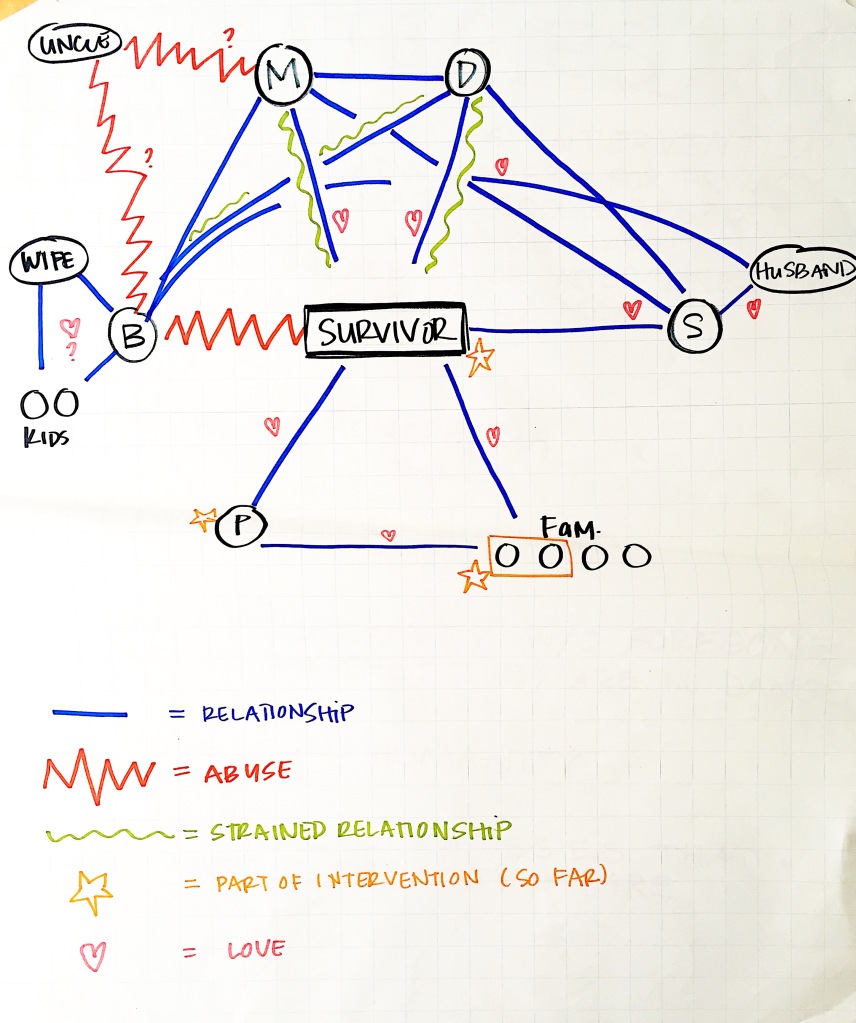Case studies are a great tool for practicing intervention and TJ skills for any level of knowledge or experience. Since case studies contain realistic or real-life experiences, they allow us to sift through specific details and think through needs and options in a way that readings or abstract discussions don’t offer. Case studies allow people to ask key questions, engage in conversations, hone values, principles, practices, and generally explore concepts related to TJ in an applied manner. This type of practice can be especially useful for those who aren’t yet ready to support a live intervention but want the opportunity to flex their skills.
These are some of the case studies the BATJC uses in our TJ Study and TJ Labs. They are inspired by real-life situations in our intimate networks and communities that many of us have been asked to respond to. They are very useful small group activities to do with your pod, friends, roommates, family, neighbors, coworkers or other community members interested in TJ.
We suggest using the “Case Study General Questions and Practices” as a starting place. These are general practices we’ve synthesized from our work to respond to violence, harm and abuse. We encourage you to engage with case studies across a range of topics and forms of violence, including the ones that are feel uncomfortable or foreign to you.
We share these case studies with the hope that they will be useful for sharpening our collective skill, capacity, and desire to respond to violence, harm and abuse in all our communities!
BATJC Case Study General Questions and Practices
BATJC Case Study – Activist Community Accountability
BATJC Case Study – Child Sexual Abuse (Historical)
BATJC Case Study – Intimate Partner Abuse: Joey & Martha
BATJC Case Study – School Mandated Reporter
BATJC Case Study – Roommates Supporting Accountability
BATJC Case Study – CSA (Live) and Parenting

We often use case studies to practice relationship mapping. Relationship mapping is a tool for visually representing relationship histories and experiences. These maps can be continually updated as new information comes to light, and allow process or intervention facilitators to identify people who may be able to play different roles in a process. They are also useful for ensuring people are on the same page about complex histories, contexts, and community structures.
Image description: A hand drawn map showing different relationships between people involved in a case study. There are different words and letters representing the people involved such as “survivor,” “M,” “D,” “wife,” “uncle,” connected by different lines and symbols representing the kind of relationship: abuse, love, strained.
These tools were created by community members and volunteers for use during a Transformative Justice Lab in 2017 as part of the Bay Area Transformative Justice Collective (BATJC). Please feel free to use this free resource, provided it is made available at no cost to participants and attributed to the BATJC.
This work is licensed under a Creative Commons Attribution 4.0 International License.